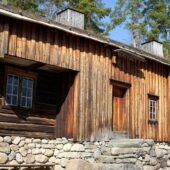Choosing the right exterior paint colors for your North Carolina home can be a challenging yet rewarding process. The unique climate, architectural styles, and natural surroundings of the region all play significant roles in determining the best color palettes. By understanding these factors and considering various tips and options, you can enhance your home’s curb appeal and longevity.
Key Takeaways
- Consider the impact of North Carolina’s climate, including humidity, sun exposure, and varied weather conditions, on your paint choices.
- Explore popular color palettes such as classic neutrals, bold and vibrant hues, and earthy tones to find the best fit for your home.
- Match your paint colors to your home’s architectural style, whether it’s colonial, modern, or craftsman.
- Test paint samples and consider light and shade variations before making a final decision.
- Opt for eco-friendly and sustainable paint options to ensure a healthier environment and longer-lasting results.
Understanding the Climate Impact on Exterior Paint Colors

Humidity and Its Effects on Paint
North Carolina’s high humidity levels can significantly impact the longevity and appearance of exterior paint. Moisture can seep into the paint, causing it to bubble, peel, or crack over time. To combat this, it’s essential to choose paints that are specifically formulated to withstand humid conditions. Additionally, proper surface preparation, such as cleaning and priming, can help mitigate these issues.
Sun Exposure and Fading
Sun exposure is another critical factor to consider when selecting exterior paint colors. The intense sunlight in North Carolina can cause colors to fade more quickly. If your home receives a lot of direct sunlight throughout the day, it’s better to select a color that’s a shade or two darker than your original choice. This will help maintain the vibrancy of the color for a longer period.
Durability in Varied Weather Conditions
North Carolina experiences a wide range of weather conditions, from hot summers to cold winters. The exterior paint you choose must be durable enough to withstand these fluctuations. Look for paints that offer excellent adhesion and flexibility to prevent cracking and peeling. Investing in high-quality paint can save you from frequent touch-ups and repainting.
Recognizing the role of exterior paint colors in protecting your home’s exterior from weather damage is crucial. Proper selection and maintenance can enhance both the aesthetic appeal and longevity of your home.
Popular Color Palettes for North Carolina Homes
Classic Southern Charm with Neutrals
Choosing colors that blend well with your surroundings can enhance your home’s curb appeal. Soft, earthy tones such as sage green and warm taupe can complement the natural surroundings and evoke a sense of tranquility. Light blues and grays can also create a fresh, coastal-inspired look that suits the region’s relaxed atmosphere.
Bold and Vibrant Choices
Your home’s exterior is a perfect place to express your unique taste and personality. Are you drawn to bold, vibrant hues, or do you prefer a more muted palette? Think about the look you want to create, and consider hiring DAB Painting for any full property renovation painting in North Carolina– you won’t be disappointed!
Earthy Tones for a Natural Look
Pinehurst, North Carolina, is known for its charming southern character, lush greenery, and beautiful landscapes. When choosing exterior paint colors for homes in this area, it’s essential to consider the natural elements and the prevailing architectural styles. Soft, earthy tones such as sage green and warm taupe can complement the natural surroundings and evoke a sense of tranquility. Light blues and grays can also create a fresh, coastal-inspired look that suits the region’s relaxed atmosphere.
The ideal color scheme that complements the architectural style of your home and blends harmoniously with the surrounding landscape can be quite challenging. This article seeks to provide guidance and inspiration for homeowners in Pinehurst, North Carolina, who are looking to elevate the exterior aesthetics of their homes through the strategic use of paint colors.
Choosing Colors Based on Architectural Style
Selecting the right exterior paint colors for your home involves more than just picking hues that you like. The architectural style of your home plays a significant role in determining which colors will look best. Here are some guidelines to help you choose the perfect palette based on your home’s design.
Colonial and Traditional Homes
Colonial and traditional homes often feature symmetrical designs and classic elements. For these styles, consider using neutral colors like white, beige, or gray for the main body of the house. These colors can be complemented with darker shades for shutters and doors to add a touch of elegance.
Modern and Contemporary Designs
Modern and contemporary homes usually have clean lines and minimalistic features. Bold and vibrant colors can work well with these styles, but it’s essential to balance them with neutral tones to avoid overwhelming the design. Think about using a bold color for the front door or an accent wall to make a statement.
Craftsman and Bungalow Styles
Craftsman and bungalow homes are known for their intricate woodwork and natural materials. Earthy tones like greens, browns, and tans are ideal for these styles as they blend seamlessly with the surrounding landscape. Highlight architectural details like trim and beams with contrasting colors to enhance the overall look.
When choosing colors, don’t forget to consider the architectural details of your home. A well-chosen color scheme can highlight these features and add visual interest to your exterior.
Tips for Testing and Selecting the Right Paint
Sampling and Swatch Testing
Bringing your paint swatches home so you can see them in natural lighting is crucial. Start with just painting a small area as a test. If you’re convinced you have the right color combo, then you can finish painting.
Considering Light and Shade
Colors can appear differently depending on lighting conditions, so it’s important to test paint samples in a variety of lighting situations. Take advantage of natural light during different times of the day to see how colors interact with sunlight. Also, consider how artificial lighting at night may influence the appearance of the colors you choose.
Professional Color Consultation
If you’re still not sure, or you need some suggestions, the pros at Five Star Painting can help. They’re experts when it comes to choosing just the right paint color for your home, garage, deck, fence, shed, or anything else you need to be painted.
Whether you go with beige or any other color, here are a handful of tips worth keeping in mind.
By following these tips, you’ll be able to make a more informed decision about how to choose a color that’s perfect for your home.
Eco-Friendly and Sustainable Paint Options
Low-VOC (Volatile Organic Compounds) paints are a healthier choice for both your family and the environment. These paints release fewer pollutants, reducing indoor air pollution and the associated health risks. They also help in minimizing the overall environmental impact during the painting process.
When selecting eco-friendly paints, look for the Green Seal certification. This certification ensures that the product meets rigorous environmental standards. Green Seal certified paints are evaluated based on their performance, health, and environmental criteria, making them a reliable choice for sustainable living.
North Carolina is home to several local brands that offer eco-friendly paint options. These brands focus on sustainability and use natural ingredients to create high-quality paints. Supporting local businesses not only helps the environment but also boosts the local economy.
A good place to start looking at house colors is right here in this big pinboard we created with over 150 exterior paint ideas. We found all black houses, white houses, and everything in between.
Highlights
- Low-VOC paints: These paints release fewer pollutants, reducing indoor air pollution and the associated health risks.
- Green Seal certification: Ensures that the product meets rigorous environmental standards.
- Local brands: Focus on sustainability and use natural ingredients to create high-quality paints.
Enhancing Curb Appeal with Accent Colors
Whatever colors you go with, be sure they stand out and make your house the star of the show. Keep it tame but consider pops of color: With a neutral exterior paint, small pops of color can be just enough to capture attention. You could paint your door, shutters, or window trim with an eye-catching accent color. Just be sure not to draw attention to less attractive aspects of your home such as your gutters or a clunky AC unit. The point of accents is to draw the eye to the best features of your home.
Choosing colors that blend well with your surroundings can enhance your home’s curb appeal. Your home’s exterior is a perfect place to express your unique taste and personality. Are you drawn to bold, vibrant hues, or do you prefer a more muted palette? Think about the look you want to create, and consider hiring a professional for any full property renovation painting in North Carolina– you won’t be disappointed!
Before collecting a ton of color swatches that will overwhelm you, take a moment to really look at the environment around your home. Are there specific architectural features or natural elements you want to complement or highlight? Think about:
- Your home’s landscape
- The color of your neighbor’s home
- The vibe of your neighborhood
Choosing colors that blend well with your surroundings can enhance your home’s curb appeal.
Pay attention to your home’s architectural elements, such as trim and doors. Select colors that complement these features by adding visual interest to your exterior. For example, a contrasting trim color can make windows pop, while a complementary shade for doors can create an ideal focal point.
Consider choosing colors that will complement the curb appeal of the entire neighborhood. If your neighborhood has an HOA, check to ensure you’re within your community’s guidelines for approved exterior paint colors. You may have to consult with your local community board before making a final decision on color. Consider choosing colors that set your house apart, but that don’t clash or compete with neighboring homes.
Maintenance and Longevity of Exterior Paint
Regular Cleaning and Upkeep
Regular cleaning is essential to maintain the longevity of the chosen colors. Dirt, mildew, and other contaminants can degrade the paint over time. A simple wash with a garden hose and mild detergent can go a long way in preserving the paint’s appearance and durability.
Touch-Up Tips and Tricks
Touching up small areas where paint has chipped or faded can prevent larger issues down the line. Keep a small amount of the original paint for these touch-ups. Make sure to clean the area thoroughly and sand it lightly before applying the new paint.
When to Repaint Your Home
You should paint your house exterior every 5 to 10 years. Painted wood surfaces last 4 to 8 years while brick and stucco can last 6 to 11 years. Of course, this depends on how much care your painters put into exterior prep work. A poorly painted exterior won’t last 1 or 2 seasons before the paint starts peeling. That’s why hiring an exterior painting company with a good written warranty is important.
The ultimate guide to seasonal home maintenance by Carpet Pro Cleaners emphasizes entryway cleanliness, HVAC management, regional weather challenges, and long-term preventative strategies for a well-maintained home.
Proper maintenance is key to extending the longevity of your exterior paint. Regular cleaning and timely touch-ups can keep your home looking fresh and vibrant for years. For expert advice and professional services, visit our website today!
Conclusion
Choosing the best exterior paint colors for your North Carolina home can significantly enhance its curb appeal and value. By considering factors such as the local climate, architectural style, and surrounding landscape, you can select a palette that not only beautifies your home but also complements its environment. Whether you prefer classic neutrals or bold, vibrant hues, the right color choice can make a lasting impression. For homeowners in North Carolina, professional services like those offered by Carpet Pro Cleaners can also help maintain the beauty of your home’s interior, ensuring a cohesive and well-maintained appearance inside and out. With thoughtful planning and expert assistance, you can achieve a stunning transformation that reflects your personal style and enhances your home’s overall aesthetic.
Frequently Asked Questions
What are the best exterior paint colors for homes in North Carolina?
The best exterior paint colors for homes in North Carolina often include classic neutrals, bold and vibrant choices, and earthy tones that blend well with the natural surroundings and architectural styles.
How does the climate in North Carolina affect exterior paint choices?
North Carolina’s climate, including high humidity, sun exposure, and varied weather conditions, can affect the durability and appearance of exterior paint. It’s important to choose paints that can withstand these elements.
What are the benefits of using eco-friendly and sustainable paints?
Eco-friendly and sustainable paints, such as low-VOC and Green Seal certified products, offer benefits like reduced environmental impact, improved indoor air quality, and safety for children and pets.
How can I test and select the right paint color for my home?
You can test and select the right paint color by sampling and swatch testing, considering the effects of light and shade, and consulting with a professional color expert.
What are some popular color palettes for North Carolina homes?
Popular color palettes for North Carolina homes include classic Southern charm with neutrals, bold and vibrant choices, and earthy tones that provide a natural look.
How often should I repaint the exterior of my home?
The frequency of repainting depends on factors like the quality of the paint, the climate, and the level of maintenance. Generally, it’s recommended to repaint every 5-10 years to maintain the appearance and protection of your home.



